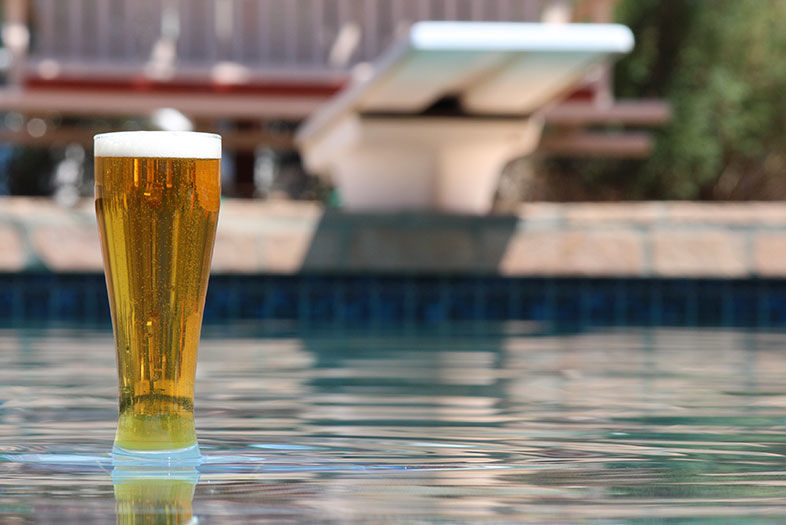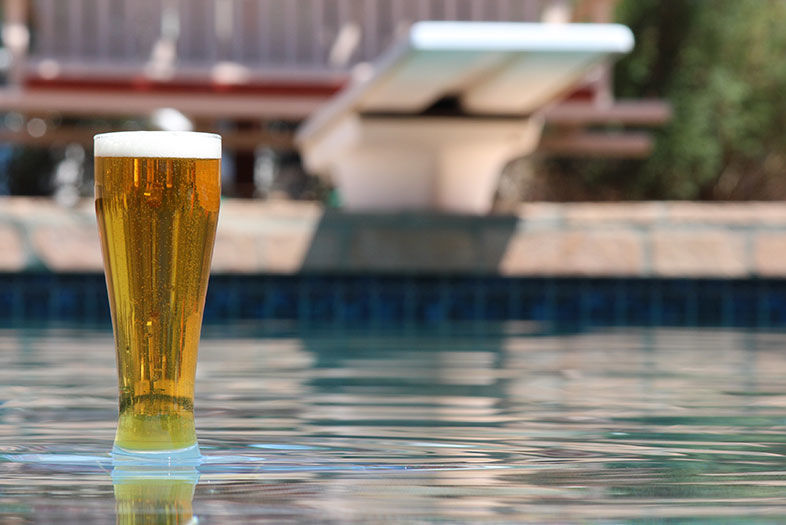Labor Day may be approaching, but summer in San Diego is still in full swing—in fact, it’s sweltering. With temps hovering in the high 90s lately, I’ve been forced to take a short hiatus from big, hop-and-malt-heavy beers, looking instead to lighter, crisper, lower-alcohol options that also offer depth and character. Hello Pilsners. These low-hop and relatively low-malt brews, when well made, can deliver truly satisfying flavor in a crisp, clean, refreshing package (they’re rivaled only by other beers in the same stylistic vein, such as Helles, Kolsch, and Blonde).
Unfortunately, Pilsners tend to get a bum rap in our fair city. I suspect this is mostly because we’ve become so famous for “San Diego style” IPAs, which are more aggressively hopped (and often higher alcohol) than IPAs from other places. The popularity of San Diego IPAs has fed a hop obsession and an IPA brewing frenzy that has overshadowed all the other styles being brewed in town. And, hey, I get it. I love San Diego IPAs, too. I just don’t love them as much when it’s 99 degrees outside.
A great Pilsner (like a great Helles or Kolsch) strikes the perfect balance between slightly bready maltiness and refreshing, palate-cleansing bitterness from hops. These malts and hops are not the same varieties commonly used in IPAs or pale ales—they are more “restrained” versions that are best suited to cooler fermentation (lager) temperatures. They produce “clean” beers with more subtle flavors that dance more delicately on your palate (in other words, a Pilsner does the Cha-Cha on your tongue while a big IPA turns your mouth into a Mosh Pit).
These lagers, made most famous by Germany and Czechoslovakia (now the Czech Republic) are pleasing and easy to drink, but they are by no means easy to make. To achieve their perfect balance, as most brewers will attest, is no mean feat. Jim Crute, who makes Elemental Pilsner at Lightning Brewery, says Pilsner and Helles-style beers are tough because, “every step of brewing, fermentation, lagering, and packaging needs to be exactly correct.” If one step in the process goes even a little bit wrong, he says, “the beer will not taste quite right.”
Because these lagers require near perfect brewing procedure, which requires consummate brewing skill, they are also regarded by most brewers to be the benchmark of a good brewer. Yuseff Cherney, COO and head brewer at Ballast Point Brewing & Spirits, describes the challenges of lagers this way: “The lighter beer styles such as Helles or Pils are like a piece of artwork under a magnifying glass. There are no bold flavors to hide the flaws that may have occurred during brewing, fermentation, conditioning, or packaging. The canvas is light, crisp, and unassuming, yet these are some of the most difficult beers in the world to make.” So, while most “outsiders” may think brewers are high-fiving each other over who makes the biggest, hoppiest, highest-alcohol IPA, the truth is, real “props” go to the guys who have the chops to do Pilsners. In this way, these beers are a sort of “secret handshake” in the brewing community—if you do a good one, you’re alright.
Here’s another fact about brewers and beer that may seem counter-intuitive: At the end of a long workday (or even during one), it’s not the double IPAs or the Strong Ales most brewers reach for, it’s the Pilsner, the Helles, or the Kolsch. These are the beers that allow drinkers to enjoy flavor without being punished by alcohol content or sensory extremes. “Brewers enjoy lighter styles and usually smaller servings since we drink for flavor and experience, not for the alcoholic content in the beer,” says Jim Crute. “In fact, I can’t tell you how many brewers I have spoken with who have said the holy grail of the brewery is the lighter, flavorful beer that is non-inebriating.” Head Brewer at Gordon Biersch, Doug Hasker, has long championed the appeal of lagers. “I think sometimes people can make too much of all the “out-of-the-box” beer styles,” he says. At the end of the day, we often really just want a beer and we don’t want to spend an hour having to talk about it. If you go to a Biergarten in Bavaria, the beer is assumed to be good and there’s no need to waste time discussing it. This goes for flavor as well, sometimes we just want an unoffensive house blonde beer.”
“There is a reason why so many people love these styles,” says Yuseff Cherney. “When they are brewed correctly, they are some of the most quaffable liquids on the planet.” So, here’s a thought: The next time the thermometer starts hovering in the high 90s and you find yourself at a bar, in a bottle shop, or in a tasting room, give that light lager a try. If, by some chance, you’ve never had a craft beer, these will be your “gateway” beers of choice. If you’re a massive hop-head who loves eye-popping triple IPAs, try taking your foot off the gas for a pint or two; go ahead and coast with something a little more humble but just as worthy of our respect.

In Praise of Pilsner
PARTNER CONTENT
Photo by Bruce Glassman
















